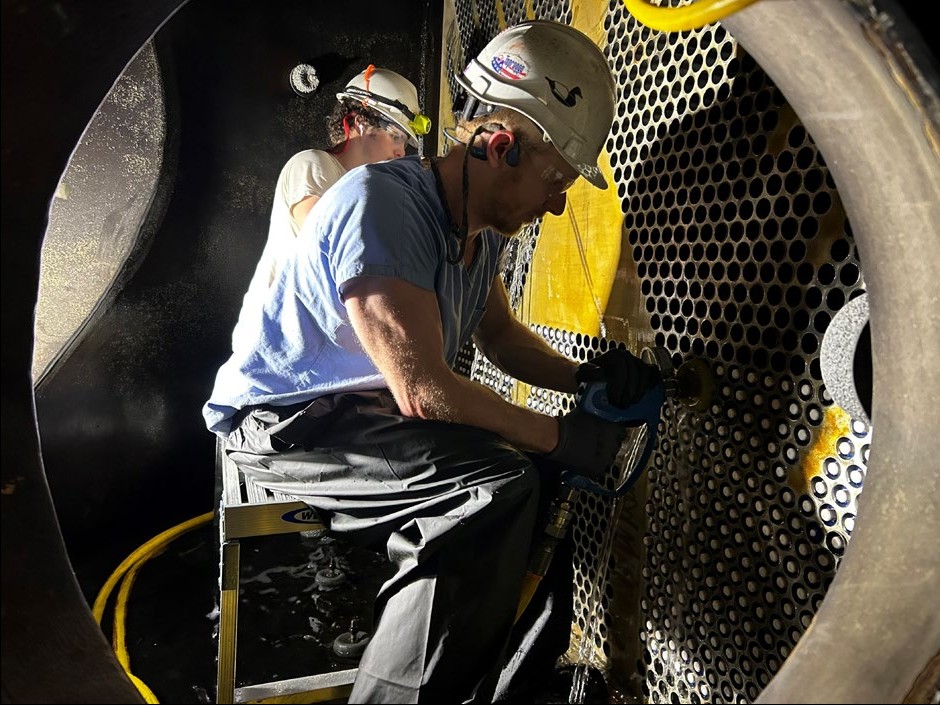Heat exchanger cleaning services play a critical role in various industrial processes, from HVAC systems to chemical manufacturing. Over time, however, these essential components can become clogged with contaminants, leading to reduced efficiency, increased energy consumption, and even safety hazards. This is where professional heat exchanger cleaning services come into play, offering specialized solutions to maintain optimal performance and prolong the lifespan of these vital systems.
Introduction to Heat Exchanger Cleaning Services
Heat exchangers transfer heat from one fluid to another, facilitating processes such as heating, cooling, and energy recovery. However, the accumulation of scale, corrosion, and other debris can impede heat transfer efficiency, resulting in diminished performance and higher operational costs. Regular cleaning and maintenance are essential to keep heat exchangers operating at peak efficiency and prevent costly breakdowns.
Importance of Regular Maintenance
Efficiency and Performance
Clean heat exchangers operate more efficiently, ensuring consistent temperature control and reducing energy consumption. By removing fouling and deposits, cleaning services help restore heat transfer rates to optimal levels, maximizing system performance and productivity.
Safety Concerns
Neglected heat exchangers can pose significant safety risks, particularly in industries where process temperatures and pressures are critical. Accumulated deposits increase the likelihood of equipment failure, leading to potentially hazardous situations such as leaks, ruptures, and fires. Routine maintenance and cleaning mitigate these risks, ensuring a safe working environment for personnel and preventing costly accidents.
Different Types of Heat Exchangers
Heat exchangers come in various designs and configurations, each with its unique cleaning requirements.
Shell and Tube
Shell and tube heat exchangers consist of a series of tubes enclosed within a cylindrical shell. These exchangers are commonly found in industrial applications and require periodic cleaning to remove scale, corrosion, and fouling from both the tube and shell sides.
Plate and Frame
Plate and frame heat exchangers utilize a series of plates with gaskets to transfer heat between fluids. While they offer high heat transfer efficiency, these exchangers are prone to fouling due to their narrow flow channels, necessitating regular cleaning to maintain performance.
Spiral
Spiral heat exchangers feature a coiled design that promotes turbulent flow, enhancing heat transfer efficiency. However, the intricate geometry of these exchangers can make cleaning challenging, requiring specialized techniques and equipment to remove deposits effectively.
Common Contaminants in Heat Exchangers
Scale and Corrosion
Mineral deposits such as calcium carbonate and iron oxide can accumulate on heat exchanger surfaces, reducing heat transfer efficiency and restricting fluid flow. Scale formation is particularly prevalent in hard water environments and high-temperature applications, necessitating periodic descaling to prevent equipment damage.
Biological Fouling
Microbial growths such as algae, bacteria, and fungi can colonize heat exchanger surfaces, forming biofilms that impede heat transfer and promote corrosion. Biocides and disinfectants are commonly used to control microbial growth and maintain system cleanliness.
Process Residues
Chemical residues from process fluids can deposit on heat exchanger surfaces, leading to fouling and reduced performance. Thorough cleaning and flushing are necessary to remove residual contaminants and restore optimal heat exchanger operation.
Methods of Heat Exchanger Cleaning
Chemical Cleaning
Chemical cleaning involves the use of specialized solvents and detergents to dissolve and remove fouling deposits from heat exchanger surfaces. Acid-based cleaners are commonly employed for scale removal, while alkaline solutions are used to neutralize acidic residues and prevent corrosion.
Mechanical Cleaning
Mechanical cleaning techniques such as brushing, scraping, and sandblasting physically remove fouling deposits from heat exchanger surfaces. Mechanical methods are effective for removing stubborn contaminants and restoring heat transfer efficiency.
Hydro-Jetting
Hydro-jetting utilizes high-pressure water jets to dislodge and flush out fouling deposits from heat exchanger tubes and passages. This non-destructive cleaning method is particularly effective for removing soft deposits and biological fouling without damaging sensitive components.
Ultrasonic Cleaning
Ultrasonic cleaning employs high-frequency sound waves to agitate cleaning solutions, dislodging and dispersing fouling deposits from heat exchanger surfaces. This gentle yet powerful cleaning method is ideal for removing fine-scale particles and enhancing heat transfer efficiency.
Benefits of Professional Cleaning Services
Expertise and Experience
Professional heat exchanger cleaning services have the knowledge, skills, and equipment to effectively clean and maintain a wide range of heat exchanger systems. Their expertise ensures thorough cleaning and prevents damage to sensitive components, prolonging the lifespan of the equipment.
Cost-Effectiveness
While DIY cleaning methods may seem cost-effective initially, professional cleaning services offer long-term savings by preventing equipment failures, reducing energy consumption, and minimizing downtime. Investing in professional maintenance pays off in terms of improved performance and operational efficiency.
Time Efficiency
Professional cleaning services save time and labor by handling the entire cleaning process from start to finish. With their efficient workflows and specialized equipment, they can complete cleaning tasks quickly and effectively, minimizing disruptions to ongoing operations.
DIY vs. Professional Cleaning: Pros and Cons
DIY Cleaning
Pros:
- Cost Savings
- Flexibility and Control
Cons:
- Limited Effectiveness
- Risk of Damage
Professional Cleaning
Pros:
- Expertise and Experience
- Thorough Cleaning
Cons:
- Higher Cost
- Dependence on External Service Providers
Factors to Consider When Choosing a Cleaning Service
Reputation and Reviews
Research the reputation and customer reviews of cleaning service providers to ensure they have a track record of delivering high-quality results and excellent customer service.
Safety Protocols
Verify that the cleaning service follows industry best practices and safety protocols to protect personnel, equipment, and the environment during the cleaning process.
Pricing and Packages
Compare pricing and service packages from multiple cleaning providers to find the best value for your specific needs and budget requirements.
Conclusion
Professional heat exchanger cleaning services are essential for maintaining optimal performance, efficiency, and safety in industrial applications. By investing in regular maintenance and cleaning, businesses can prolong the lifespan of their heat exchanger systems, reduce operating costs, and minimize the risk of costly breakdowns and accidents.
Stay in touch to get more updates & news on Vents Magazine!
